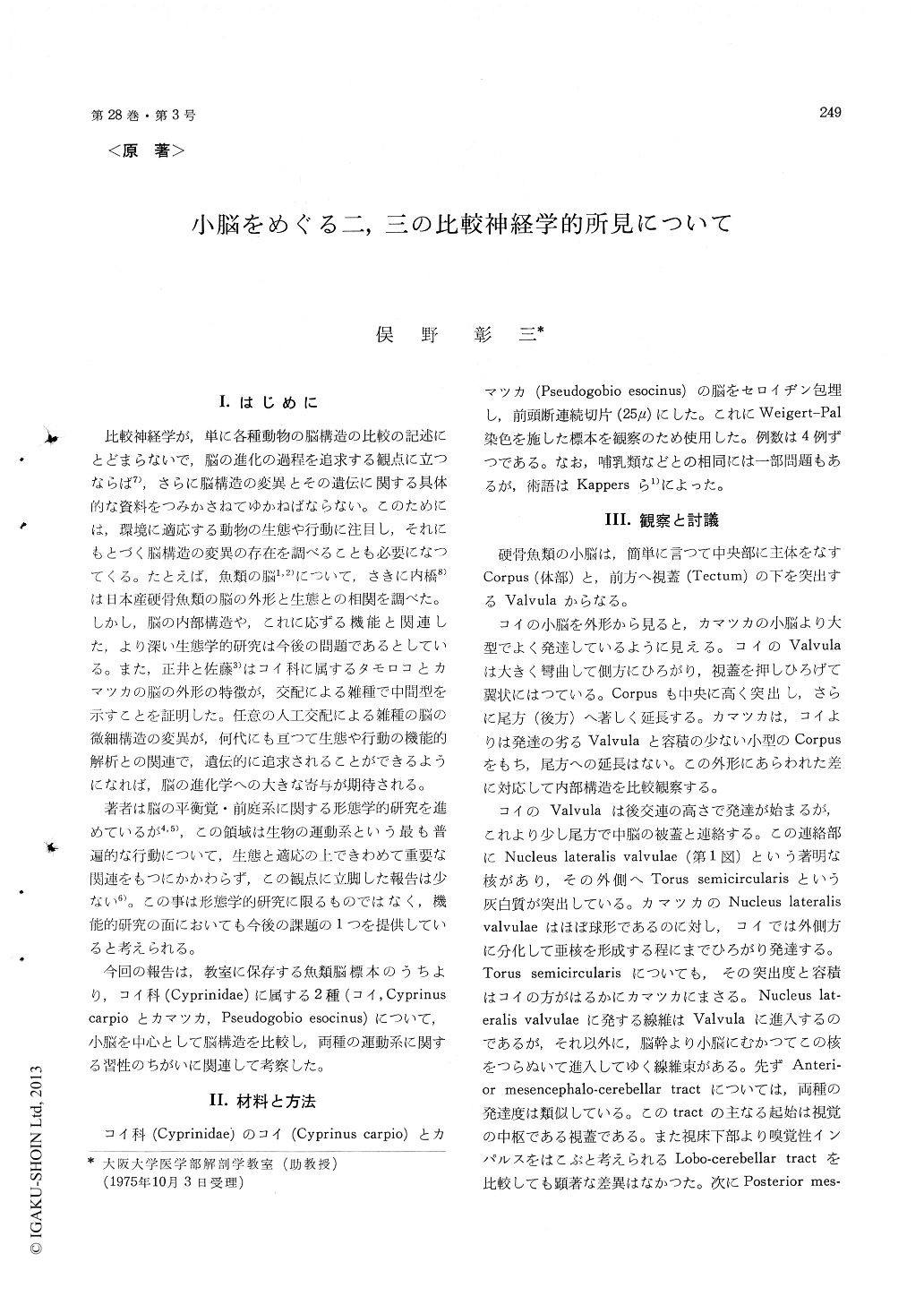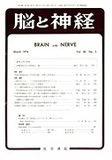Japanese
English
- 有料閲覧
- Abstract 文献概要
- 1ページ目 Look Inside
I.はじめに
比較神経学が,単に各種動物の脳構造の比較の記述にとどまらないで,脳の進化の過程を追求する観点に立つならば7),さらに脳構造の変異とその遺伝に関する具体的な資料をつみかさねてゆかねばならない。このためには,環境に適応する動物の生態や行動に注目し,それにもとづく脳構造の変異の存在を調べることも必要になつてくる。たとえば,魚類の脳1,2)について,さきに内橋8)は日本産硬骨魚類の脳の外形と生態との相関を調べた。しかし,脳の内部講造や,これに応ずる機能と関連した,より深い生態学的研究は今後の問題であるとしている。また,正井と佐藤3)はコイ科に属するタモロコとカマツカの脳の外形の特徴が,交配による雑種で中間型を示すことを証明した。任意の人工交配による雑種の脳の微細構造の変異が,何代にも亘つて生態や行動の機能的解析との関連で,遺伝的に追求されることができるようになれば,脳の進化学への大きな寄与が期待される。
著者は脳の平衡覚・前庭系に関する形態学的研究を進めているが4,5),この領域は生物の運動系という最も普遍的な行動について,生態と適応の上できわめて重要な関連をもつにかかわらず,この観点に立脚した報告は少ない6)。この事は形態学的研究に限るものではなく,機能的研究の面においても今後の課題の1つを提供していると考えられる。
Comparative neuroanatomy may contribute to progress of the evolutionary biology by studying variations of the brain structure related to the ecol-ogical and genetical points of view.
From Weigert-Pal preparations of the brains of the Cyprinid family, two species (cyprinus carpio and pseudogobio esocinus) of brains were selected and were comparatively observed taking the focus upon the cerebellar structure.
The bulbar terminal portions of the acoustico-lateral line and vestibular nerves, that is crista cerebelli, nucleus Deiters, nucleus tangenitalis etc. were well developed in carp than that of pseudo-gobio. Moreover, differences of development were caused in some parts of brainstem ; torus semi-circularis, nucleus lateralis valvulae, posterior mesencephalo-cerebellar tract, brachium conjunc-tivum, interauricular commissure etc. Concerning the acoustico-lateral line and vestibular nervous impulse, the pathway to the cerebellum primarily passes through the crista cerebelli, nuclei tangeni-talis and Deitcrs and cminentia granularis, and secondly does through the torus semicircularis, nucleus lateralis valvulae, the reticular reticular formation and the posterior mesencephalo-cerebellar tract.
As a result, the intensity of organization and integration of the cerebellum is greatly influenced to these structural differences, and the cerebellum in carp was more remarkably developed than that in pseudogobio. Ecologically, pseudogobio always dwells at the bottom of the river, burrows in the muddy river bed, and it's movement shows very poor activity and its never rises toward the surface, whereas carp can quick move and occasionally show jumping activity.
Variations of the cerebellar structure between these two species were considered to be dependent upon the differences of their habit of everyday life.

Copyright © 1976, Igaku-Shoin Ltd. All rights reserved.


